Are you the type of person who loves a light airy Chiffon cake? Or do you prefer one that’s densely moist with a bit more to each bite? I actually enjoy both! And this chiffon cake is more on the light side! And you know what that airy and super soft texture goes extremely well with? Sencha- Japanese green
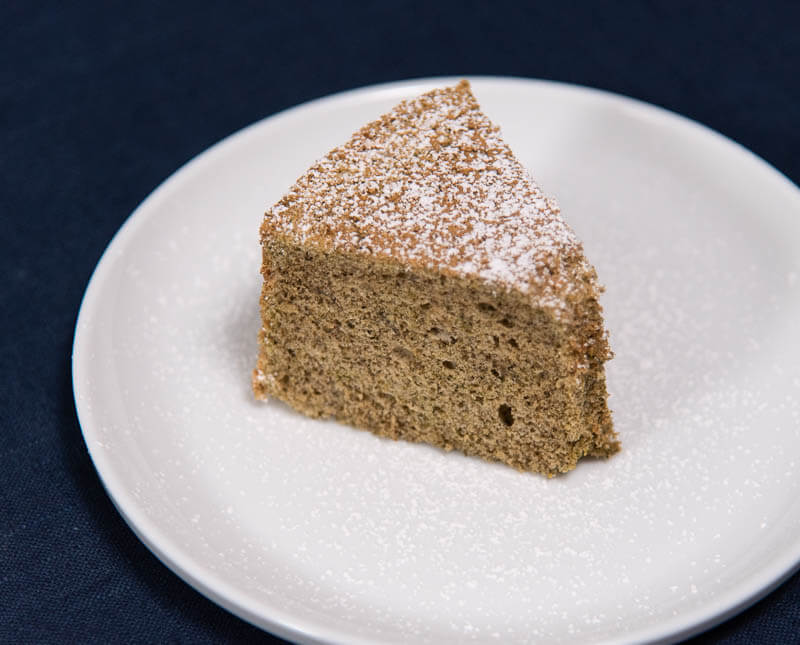
Chiffon cake with Sencha (Japanese green tea ) 煎茶入りシフォンケーキ
I remember the first time I ever used green
It was when I tried to make green tea ice cream.
Not matcha ice cream.
Green
Slightly different flavor.
It was quite good and I still make it every now and then, like when I get tired of matcha ice cream.
Like I get tired of matcha ice cream, I also get tired of regular (butter based cakes).
My alternative?
Chiffon cake of course!
A chiffon cake is a very light American cake made with vegetable oil, eggs, sugar, flour, and other goods.
Some recipes may call for baking powder, but this one doesn’t.
And today, we’re making it Japanese style with Japanese green tea!
If you’ve been to Japan, it’s one of those desserts that you’ll see at almost every cake bakery.
That, and strawberry shortcake and baumkuchen seem to be pretty popular over there.
Have you noticed?

My first chiffon cake
The first chiffon cake I actually made was with cocoa, coffee, some rum and a light buttercream.
It was about as fluffy as a chiffon cake can be and set the standard for me. (for homemade chiffon cakes)
Do you remember your first cake?
I don’t remember exactly what it was but I’m pretty sure it was a Betty Crocker mix sometime either in high school or college.
Back when I really didn’t particularly care much about food. 😯
My how times have changed!
Anyways, that first chiffon cake I mentioned – it’s a classic and very much different from today’s version.
Maybe I’ll share that sometime later this year.
So if you’re used to making a regular butter and baking powder based cake…
When making a chiffon cake, there are a few differences you need to keep in mind to make it a success.
Read on for a few of my tips below!
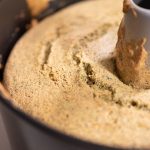
Serving the sencha chiffon cake
As far as serving this super delicious cake – all you need to do is serve it with some sweet cream!
You can even make it a vanilla whipped cream or ice cream.
You can also serve it with sweet red bean paste -anko (is what it’s called in Japanese) and you’ll have a very Japanese dessert!
You can even serve this with some hot hojicha (which is roasted green
IMO that is the best ! and if you go to a dessert shop while in Japan, you might get a little hojicha with your desserts, it’s a great way to wash down something sweet 🙃
Here’s a short video I made to show you exactly how I made this cake! Japanese Chiffon Cake with Sencha (Japanese green tea)
Tips for making this Japanese chiffon cake a success
I have several tips for you
- sift the flour and the green
tea after you have processed it in your spice grinder. Like I mentioned in the video, you don’t have to process the leaves, but I think that the texture is a little bit more refined when you don’t have chunks oftea in your cake but that’s totally up to you - The key to making this cake a success is definitely making sure that you get soft – stiff peaks from your egg whites. using refrigerator temperature eggs will help. as will adding in the sugar in batches I do 2 to 3 batches.
- Another thing is to go easy on the sugar. I don’t really like my cakes too sweet. For me, I think this has the just right amount of sweetness. But, if you like your cake super sweet you might want to increase sugar maybe about 2 tablespoons to 3 tablespoons max. Remember, we’re gonna be serving us with additional whipped cream and anko or alternatively powdered sugar, using one of my favorite wands! So that’s another reason why I don’t like my chiffon cake that sweet. You can always add it later as a topping, but you can’t take it out.
- Before you actually bake the cake is to use a chopstick or at wood skewer to go zigzag across the batter to make sure that there aren’t any holes or pockets of air (which can occur if you didn’t fold thoroughly). Also it’ll help to ensure all the cake batter is hitting the bottom of the pan. this is key because when you invert it you want the top part to be completely flat and not have any dips or pothole that would make an uneven surface!
- As far as the baking goes, you should probably use a tube cake pan. like this one with the hole in the center. You don’t want to use a regular cake pan because you can’t invert without having it fall out. Which, if that happened to you would be a disaster.😕literally. you might have to call the ambulance for your cake.
- If you want to make this a little bit more interesting in flavor you could substitute the vegetable oil for extra-virgin olive oil. this’ll add a nice layer of flavor as well as the health benefits of olive oil. Highly recommend by the way, especially if you like the flavor of olive oil! know that if you do use it, you should avoid a super strong and peppery olive oil and instead use one that has a mild flavor.
- if you make a large cake you can freeze the extras. it freezes pretty well stored in a airtight container. try to eat it within a few weeks so it doesn’t get freezer burn
- Another thing to consider is that unlike a butter cake or a oil filled cake this chiffon cake will be relatively soft even if it’s served cold. always a plus IMO since i like cold cakes and warm cakes depending on the season!
- When you’re cutting the cake make sure you use a serrated knife to get a clean cut other knives may tear
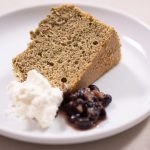
Overall, this is a pretty classic Japanese style cake with a very delicate flavors.
It has a little bit of
It’s soft and fluffy not overly sweet and the only downside is that because it contains
Otherwise, you might be staying up late but a good alternative to that is of course eating it earlier!
Also using hojicha (tea that doesn’t have caffeine) so that might be a consideration for next time!
So whatcha think?
Have you had Japanese style chiffon cake before?
Will you be trying this recipe?
PrintJapanese Chiffon Cake with Sencha (Japanese green tea)
Are you the type of person who loves a light airy cake? Or do you prefer one that’s densely moist with a bit more to each bite? I actually enjoy both! And this chiffon cake is more on the light side and by pairing that airy and super soft texture, goes extremely welly with sencha. We started with whole leaves and chopped ’em into itty little bits in my spice grinder. The result? A soft green tea flavor cake that is well-balanced in terms of flavor, texture and goes well with many toppings.
- Prep Time: 15 minutes
- Cook Time: 30 minutes
- Total Time: 1 hour 45 minutes
- Yield: 12 people 1x
- Category: Dessert
- Cuisine: Japanese
Ingredients
- 1 cup hakurikiko (plus 2 Tbsp; alternatively cake flour)
- 20 grams sencha (japanese green tea)
- 1/4 cup plus 2 Tbsp sugar (for the meringue)
- 6 whole eggs (chilled, separated)
- 1/4 cup sugar (for the egg yolks)
- 60 mls vegetable oil (or extra virgin olive oil)
- 1/3 cup water
Instructions
- Preheat your oven to 340 F.
- First separate egg yolks from the whites
- Use a stand mixer and add the sugar in 2-3 batches to the egg whites and whisk on high speed until stiff peaks form.
- Process tea leaves in a spice grinder to powderize them.
- Using a flour sifter or wire mesh strainer sift flour and tea into a mixing bowl.
- Combine sugar withe egg yolks and whisk until pastel yellow.
- Add in oil and water and whisk into egg yolk mixture until incorporated
- Add the egg yolk mixture to the sifted flour and tea, whisk until just combined.
- Gently fold the meringue with the flour-tea-yolk mixture until just combined.
- Add to your tube cake pan and drop gently on the counter a couple times and/or use a chopstick to zig zag through the batter so the top will be flat (after you invert it)
- Bake at 340F for 30 minutes.
- Once baked, remove and invert. Allow to cool.
- Once cooled remove from the tube pan. (make sure to use a slim chopstick or skewer to separate from the sides)
- Serve with powdered sugar, ice cream or whipped cream with some anko!
Notes
I used Japanese flour – hakurikiko. If you can’t find us Japanese flower just use cake flour American or make your own cake flour by substituting 2 tablespoons of cornstarch to 1 cup of all purpose flour and take out 2 tablespoons of all-purpose flour and I have cake flour



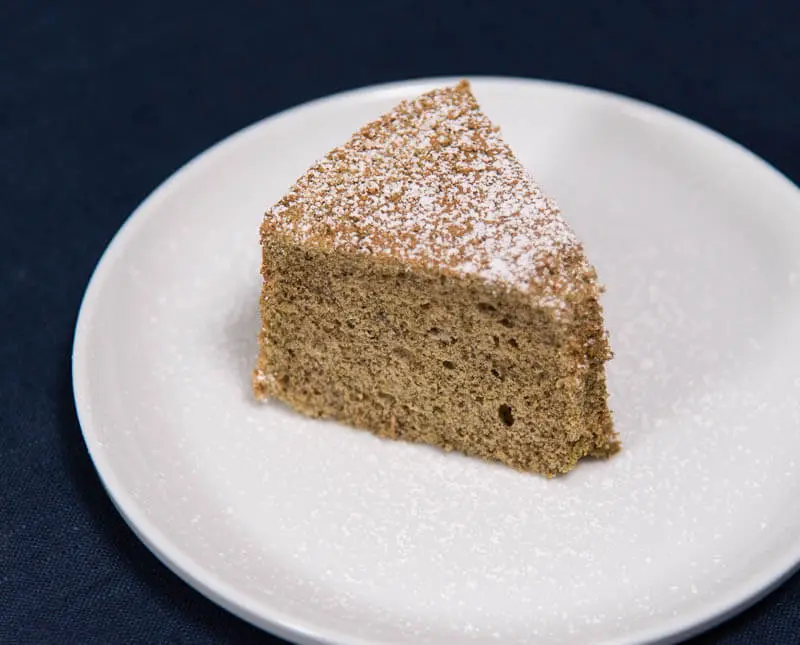
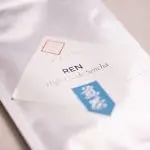
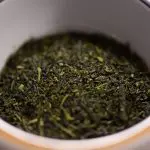
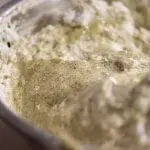
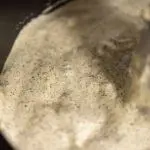


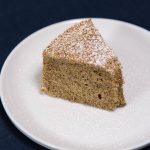
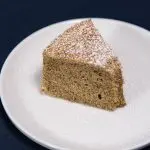
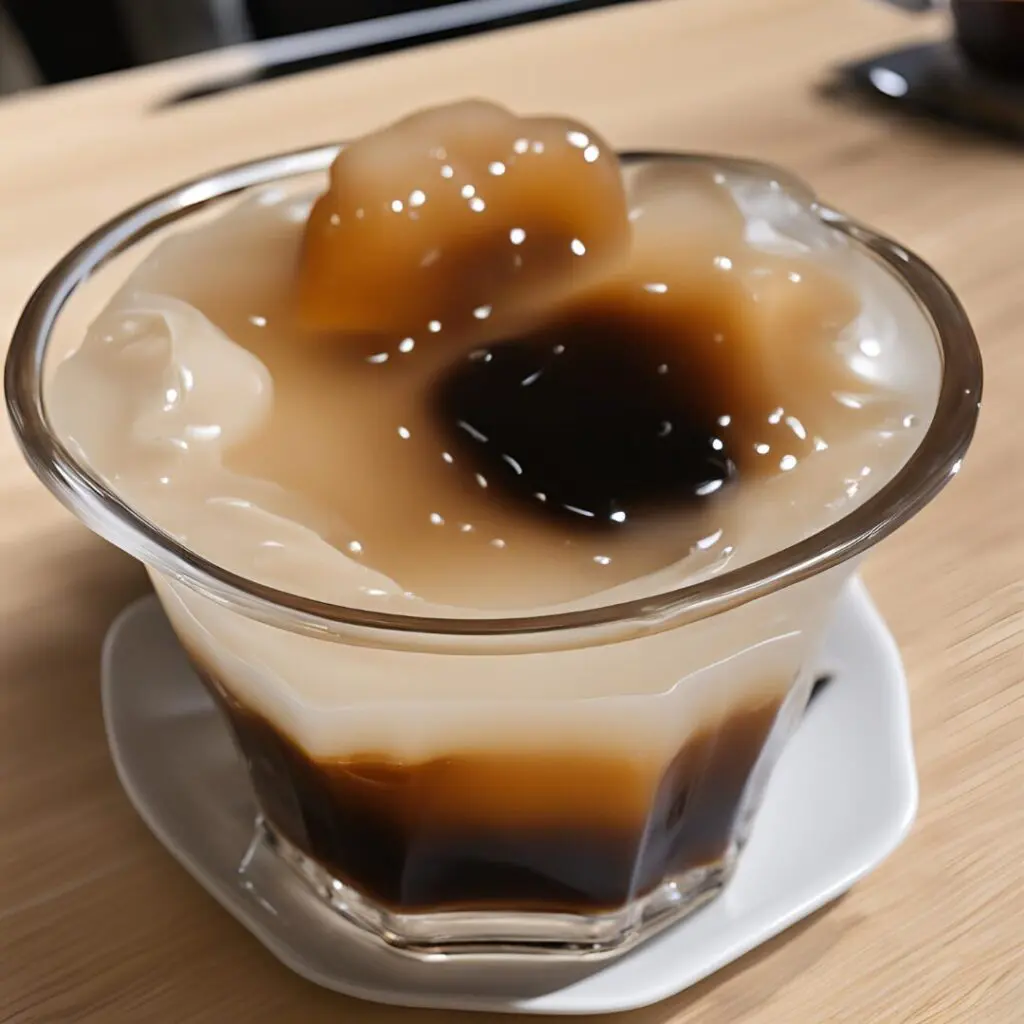
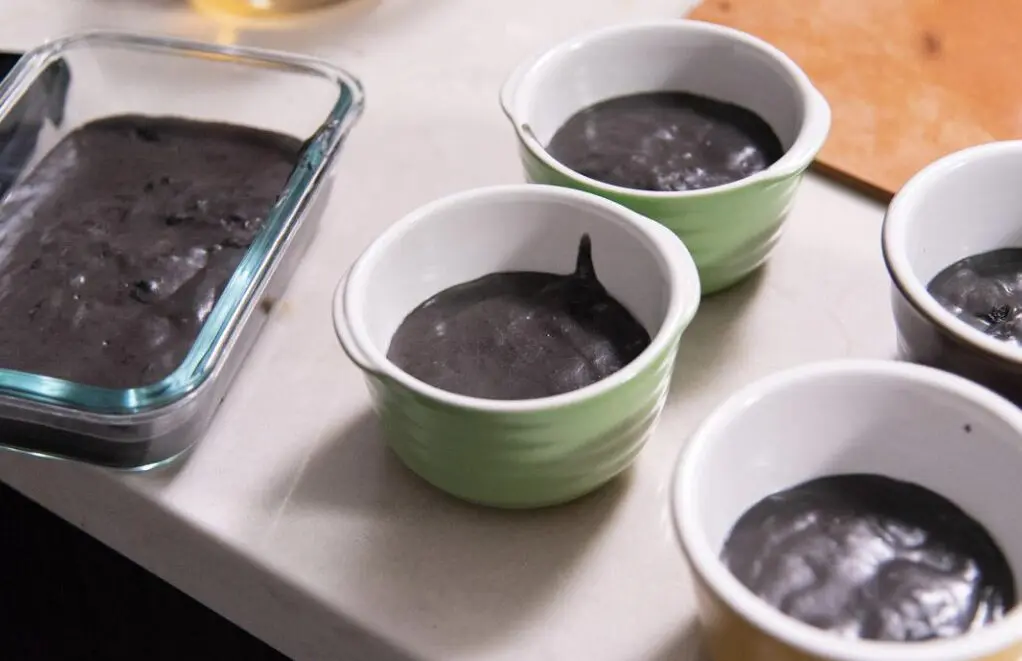
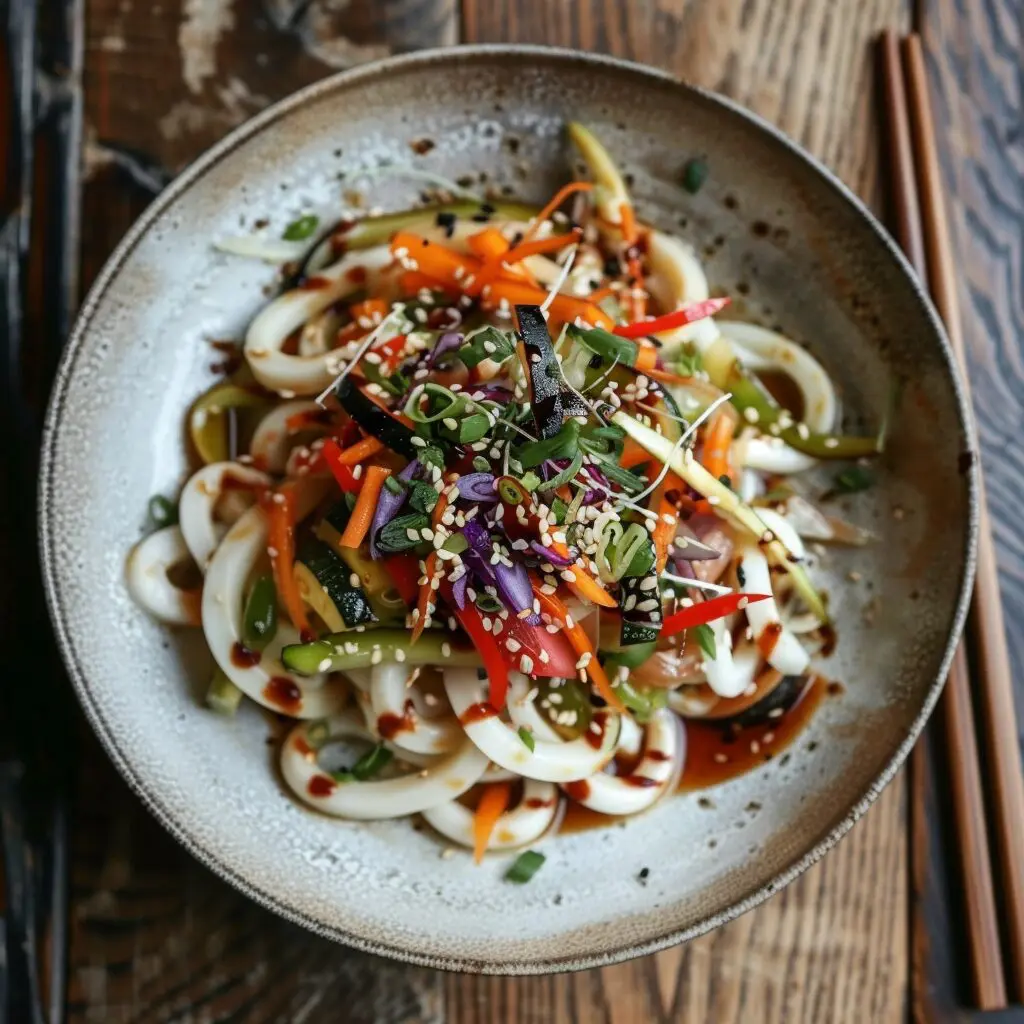


What a lovely cake, Pat! I’ve had it before, but never got around to asking my friend for a recipe, so thank you for sharing!